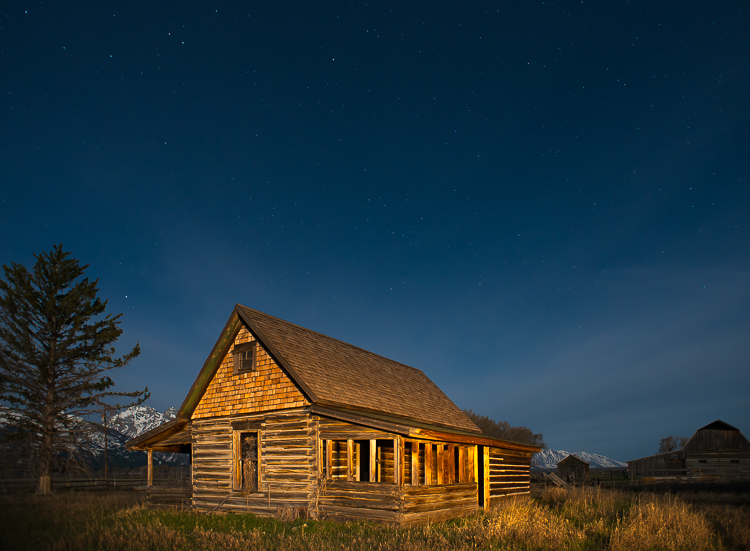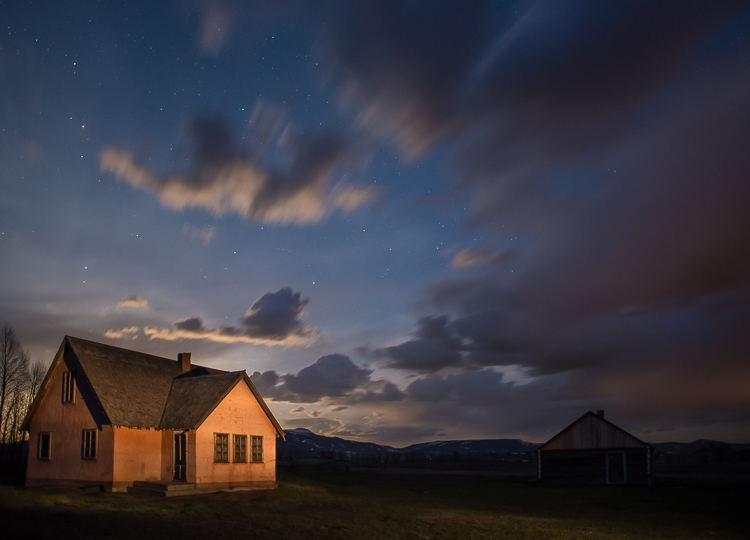Jackson Hole Photographers

Along with some other Jackson Hole photographers, I've been doing more night photography lately. With todays cameras, capturing the beauty of Grand Teton National Park under the stars has never been easier. I use a variety of different flashlights to lightpaint different subjects, from a small headlamp all the way up to a 1 million candlepower spotlight. After setting the initial exposure for the sky or stars, I'll then experiment with the length of time the subject is painted. Do some experimenting and if the light is too strong try backing away. The intensity of the flashlights coverage can really fall off within just a few yards. The best part is the immediate feedback on your screen, try different ISO's and exposure times.
Star trails are a little more complicated, requiring multiple exposures and more post-production time. I like to start with an ISO of 400 and an exposure time of 4 minutes at f/5.6. The more exposures you do, the longer the star trails will be. The image of the Moulton barn was a 12 exposure combination, using a program called StarStaX.
I think that the most difficult part of photographing the Milky Way is locating foregrounds in relation to the Milky Ways' location. I use the program Stellarium which has all the information needed to find almost anything star related. Exposure is fairly easy, I like to start with an ISO of 2500 and a time of 25 seconds at f/2.8 with a 20mm lens. Remember that the longer the focal length of your lens, the shorter the exposure times must be to avoid blurring the stars.
While Grand Teton National Park can be a busy place during the day, things really quiet down after dark. Its quite peaceful and just a great time to capture some unique images.



